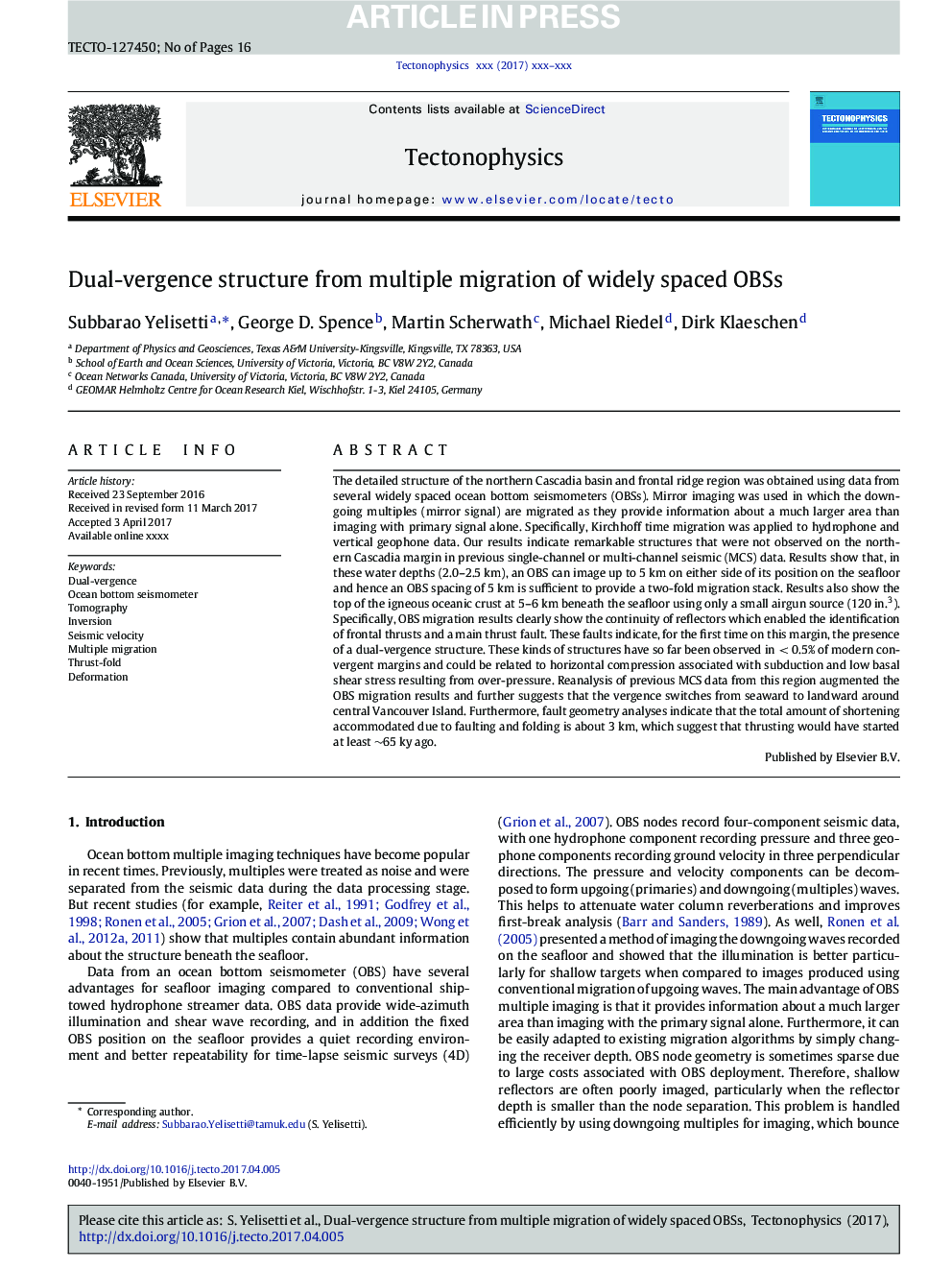| کد مقاله | کد نشریه | سال انتشار | مقاله انگلیسی | نسخه تمام متن |
|---|---|---|---|---|
| 8908882 | 1636690 | 2017 | 16 صفحه PDF | دانلود رایگان |
عنوان انگلیسی مقاله ISI
Dual-vergence structure from multiple migration of widely spaced OBSs
دانلود مقاله + سفارش ترجمه
دانلود مقاله ISI انگلیسی
رایگان برای ایرانیان
کلمات کلیدی
موضوعات مرتبط
مهندسی و علوم پایه
علوم زمین و سیارات
فرآیندهای سطح زمین
پیش نمایش صفحه اول مقاله

چکیده انگلیسی
The detailed structure of the northern Cascadia basin and frontal ridge region was obtained using data from several widely spaced ocean bottom seismometers (OBSs). Mirror imaging was used in which the downgoing multiples (mirror signal) are migrated as they provide information about a much larger area than imaging with primary signal alone. Specifically, Kirchhoff time migration was applied to hydrophone and vertical geophone data. Our results indicate remarkable structures that were not observed on the northern Cascadia margin in previous single-channel or multi-channel seismic (MCS) data. Results show that, in these water depths (2.0-2.5Â km), an OBS can image up to 5Â km on either side of its position on the seafloor and hence an OBS spacing of 5Â km is sufficient to provide a two-fold migration stack. Results also show the top of the igneous oceanic crust at 5-6Â km beneath the seafloor using only a small airgun source (120Â in.3). Specifically, OBS migration results clearly show the continuity of reflectors which enabled the identification of frontal thrusts and a main thrust fault. These faults indicate, for the first time on this margin, the presence of a dual-vergence structure. These kinds of structures have so far been observed in <Â 0.5% of modern convergent margins and could be related to horizontal compression associated with subduction and low basal shear stress resulting from over-pressure. Reanalysis of previous MCS data from this region augmented the OBS migration results and further suggests that the vergence switches from seaward to landward around central Vancouver Island. Furthermore, fault geometry analyses indicate that the total amount of shortening accommodated due to faulting and folding is about 3Â km, which suggest that thrusting would have started at least â¼ 65Â ky ago.
ناشر
Database: Elsevier - ScienceDirect (ساینس دایرکت)
Journal: Tectonophysics - Volume 718, 30 October 2017, Pages 45-60
Journal: Tectonophysics - Volume 718, 30 October 2017, Pages 45-60
نویسندگان
Subbarao Yelisetti, George D. Spence, Martin Scherwath, Michael Riedel, Dirk Klaeschen,